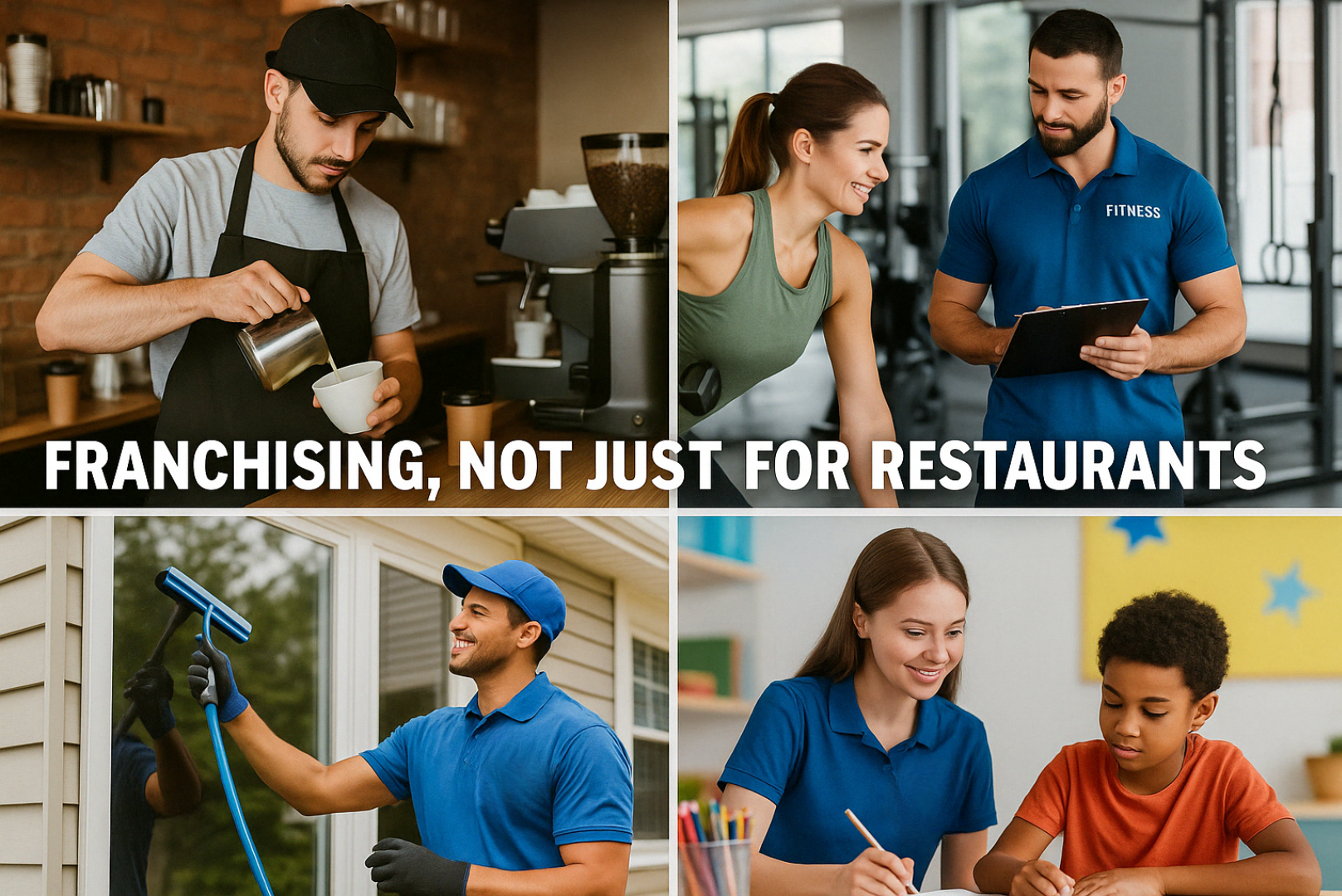New franchisees win when the first hello sets clear expectations, builds respect for the brand, and delivers practical skills that work in the field. Start early, coach often, measure what matters, and you create confident owners who protect standards, grow sales, and strengthen the entire system.
FRANCHISE ONBOARDING AND TRAINING THAT BUILD STRONG OWNERS FROM DAY ONE
Great franchise systems do not rely on a burst of classroom activity after the agreement is signed. They shape strong owners from the first contact. That approach is called franchise onboarding, and it does not begin at discovery day or at the first training session. It begins the moment a prospect meets your brand. When handled with intention, franchise onboarding builds value in the brand, sets mutual expectations, and equips new owners to operate with confidence. It also lowers risk, reduces support costs, and raises unit performance.
The highest purpose of franchise onboarding is to help a candidate become a capable operator who respects brand standards and understands why those standards exist. That purpose should inform every touchpoint, from your early discovery calls to the first shift at a new location. The more consistent and transparent the journey, the more likely a franchisee will follow the system and make sound decisions without trying to redesign the model.
Start Earlier Than Everyone Thinks
Many brands assume onboarding starts after the franchise is awarded. The stronger view is that onboarding begins at the first conversation. That is when your team sets the tone about mission, culture, core values, and the non negotiable parts of the operating model. Ask direct questions and invite direct questions in return. What does the prospect expect from the brand. What does the brand expect from the prospect. Which commitments are absolute. Where is there room for local judgment. Early clarity saves time, protects culture, and keeps misaligned candidates from entering the system.
At this stage your team is doing more than franchise training. You are teaching the candidate how to think like an owner inside your brand. Share the story behind your operating principles. Explain how the model protects unit economics. Show how standards support speed, quality, and guest experience. Prospects who value the brand will embrace the rules. Prospects who resist will self select out, which is a healthy outcome.
Build Value In The Brand
Franchisees perform better when they see real value in brand standards. Move past slogans and show the operating logic. How do prep routines shorten ticket times. Why does the floor plan flow the way it does. How do vendor programs protect product consistency and margin. This is franchise onboarding at its best. It connects mission to daily behavior. It gives owners reasons to comply that go beyond fear of a violation. When owners understand the why, they protect the system when no one is watching.
Design The Journey As A Series Of Stages
A complete franchise onboarding journey runs through clear stages.
First contact and discovery. Establish values, non negotiables, and success traits. Introduce the operations manual at a high level so prospects know what life looks like in the business.
Mutual diligence. Invite prospects to meet field leaders and peer owners. Show the reality of a work week. Discuss local marketing expectations and the exact rhythm of support. Align on financial readiness and time commitment.
Award and pre training preparation. Send a welcome kit with reading assignments from the franchise operations manual, short video lessons, and a simple glossary of brand terms. Set up access to your learning portal and to your support calendar. Confirm dates for training, site selection, and buildout.
Initial franchise training. Use blended learning. Combine classroom work with hands on coaching in a live unit. Teach the operating day from open to close. Practice tasks until owners can do them at speed and at quality. Tie every task to a standard and to a metric.
Field launch. Place experienced field coaches on site through soft opening and the first weeks of trade. Review daily numbers with the owner. Give clear action plans. Keep the focus on guest experience, labor deployment, and product consistency.
Ninety day stabilization. Set weekly calls and monthly business reviews. Track a short set of indicators. Sales by day part. Labor percent by hour. Product variance. Mystery shop scores. Ticket times. Correct fast. Praise progress.
This staged flow lets the franchisor deliver franchise support with structure and removes guesswork for the new owner.
Make Training Stick With Practical Methods
Franchise training fails when it overloads new owners with theory and no repetition. Make learning practical.
Use small modules. Teach a short topic. Practice that topic right away. Move to the next topic once proficiency is clear.
Coach in the real environment. Practice line work, guest service, cash handling, cleaning routines, order accuracy, and product build procedures in a live setting. Real noise and real pace lead to real mastery.
Test for skill, not just knowledge. Written quizzes confirm facts. Live checklists confirm performance. Ask the owner to teach a task back to the trainer. Teaching reveals what the owner truly knows.
Provide job aids that live at the station. Step cards. Portion guides. Opening and closing checklists. A one page make table map. These aids support speed and consistency on the rush.
Use a learning portal for refreshers. Owners and managers need easy access to short videos and quick reads for the tasks they do most. New hires should be able to learn the fundamentals on shift.
These methods make franchisee training efficient without losing depth. They also set the tone that training is not an event. It is part of the operating system.
Coach In The Field And Follow Up Without Fail
Transparency, consistency, and follow up lower the chance that an owner goes off model. Share expectations in writing. Visit on a steady cadence. Review the same scorecard every time. Use field time to remove friction. Adjust kitchen layout if a simple reposition can shorten the line. Clarify prep par levels to reduce waste. Practice table touches that lift check average. Every visit should blend coaching and accountability.
After each visit send a short recap. List what is working. List two or three priorities for the next period. Assign owners and managers to each item. Confirm the follow up date. This rhythm protects the relationship and keeps attention on results.
Hold Everyone To The Same Standards
A brand is a promise. The promise only holds when standards apply to every location. That is why the operations manual, job aids, training materials, and field procedures must stay current. Treat these materials like living documents. Update when a product changes. Update when a process changes. Update when a tool changes. A small change that removes a few seconds per order can change the day in a busy unit. Owners will accept updates when they see the benefit and when they trust the review process.
Compliance is not about catching people in the wrong. It is about measuring what matters and helping owners improve. Use mystery shops and product audits to verify outcomes. Use business reviews to talk about numbers that connect to those outcomes. Owners want success. Show them how standards support success and compliance becomes a shared goal.
Guard Fit As Carefully As You Teach Skills
The best onboarding program cannot fix a poor fit. The recruitment stage must test for culture, work ethic, learning pace, and coachability. Ask candidates to walk through a day in a unit. Ask how they will schedule themselves for the first three months. Listen for ownership language. Do they speak about the guest first. Do they speak about the team. Do they ask for help without excuse making. If not, do not proceed. It is better to walk away than to add a misaligned operator who will drain support and pressure peers.
Give New Owners A Simple Operating Playbook
Clarity reduces anxiety. A new owner should receive a short, punchy playbook that shows how to run the first one hundred twenty days. Keep it visible and practical.
Week one. Shadow the general manager in a training store. Learn opening and closing. Learn product build steps. Learn cash and safe controls.
Week two. Take a station and run it at speed. Practice rush readiness. Learn inventory count and order routines.
Week three. Lead a full shift with the coach on hand. Practice coaching a team member who misses a standard. Practice guest recovery when something goes wrong.
Week four. Prepare a weekly business review with your coach. Explain your numbers. Explain your plan for labor, marketing, and product quality.
Month two. Run the schedule. Interview and hire. Cross train at least two positions for bench strength.
Month three and four. Join your first peer roundtable. Share a win and a challenge. Learn one marketing tactic and one cost control tactic that you will test in your trade area.
This playbook sits beside the full franchise operations manual. The manual is the complete law. The playbook is the starter map.
Measure What Matters And Share The Data
Owners improve when they see progress. Share a core scorecard and keep it short. Sales by day and day part. Labor percent by hour. Food cost and variance. Speed of service. Guest satisfaction signals. Store level cash flow. Teach owners how each number connects to actions they control. Food cost ties to portion control and prep accuracy. Labor percent ties to smart scheduling and station readiness. Speed of service ties to line layout and par levels. When owners see the chain of cause and effect, they take better actions faster.
Keep Training Alive Over The Entire Life Cycle
Brands change. Products evolve. Tools improve. Markets shift. That is why franchise support must include ongoing training long after opening week. Use refreshers every quarter for mission critical routines. Update videos and job aids when processes change. Host live clinics for advanced topics like catering, digital marketing, and local store outreach. Reward owners who train their teams and who share best practices. A learning culture turns change from a source of stress into a source of advantage.
Show How The System Protects Freedom Rather Than Restricts It
New owners sometimes fear that rules limit their freedom. Explain the real trade. The system protects the brand promise so the owner can focus on execution and growth. Within the system there is room for local judgment. Owners can choose outreach partners in their community. Owners can coach and reward in ways that fit their team. Owners can build a pipeline of managers and shift leaders in a style that fits their personality. When the core is strong, smart local moves flourish.
Prepare Owners For Real World Decisions
Onboarding must expose owners to common decision points. What do you do when a new product slows the line. How do you manage a delivery surge on a stormy weekend. Which marketing channels pay back in your trade area. Teach owners to use data, not guesswork. Encourage small controlled tests with clear measures of success. Share case examples from within the system so lessons feel real and current.
Protect The Relationship Through Clear Communication
Communication keeps the franchisor and franchisee aligned. Set a predictable cadence. Weekly check in for the first twelve weeks. Biweekly through the next quarter. Monthly after that. Add a roundtable so owners learn from owners. Keep the channels simple and reliable. A support email that gets a response within one business day. A hotline for urgent store issues. A library of how to content that is easy to search.
Look Ahead And Modernize The Experience
Forward looking systems keep franchise onboarding fresh and effective. Use a learning portal that breaks training into short modules. Add quick knowledge checks and skill demos on video. Offer virtual coaching for owners who need help between visits. Use digital task lists with time stamps to confirm that critical routines happen on schedule. None of this is complicated. It is about making it easy to learn, easy to review, and easy to follow the system.
Why This Approach Works
Clarity, repetition, and early value building reduce the likelihood that an owner will ignore the model. The more a franchisee sees how standards protect revenue and margin, the more the franchisee will follow those standards. The more the franchisor shows up with practical help, the more the franchisee will ask for help early rather than wait for a small issue to become a big problem. Over time this operating rhythm compounds. Units open stronger. Support time per unit falls. The brand spends less time on compliance and more time on growth.
A Short Summary You Can Share With Your Team
Begin franchise onboarding at first contact. Set expectations, teach mission, and build respect for brand standards right away. Use staged learning that blends classroom work with hands on training. Coach on site at opening and for the first months. Follow up in writing after every visit. Hold everyone to the same standards. Keep materials current. Measure a short list of numbers that matter. Keep training alive for the life of the business. Modernize tools so learning is always available and easy to use. When you run this play with discipline, you build owners who can run the business with confidence and consistency.
©️ Copyright – Gary Occhiogrosso – All Rights reserved Worldwide
Sources And Websites
International Franchise Association — franchise.org
Federal Trade Commission Franchise Guidance — ftc.gov
Franchise Business Review — franchisebusinessreview.com
Franchising.com — franchising.com
Training Industry — trainingindustry.com
Society for Human Resource Management — shrm.org
Harvard Business Review — hbr.org
Google Trends — trends.google.com
Semrush — semrush.com
Ahrefs — ahrefs.com
McKinsey and Company — mckinsey.com
Franchise Direct — franchisedirect.com
This article was researched, outlined and edited with the support of A.I.



